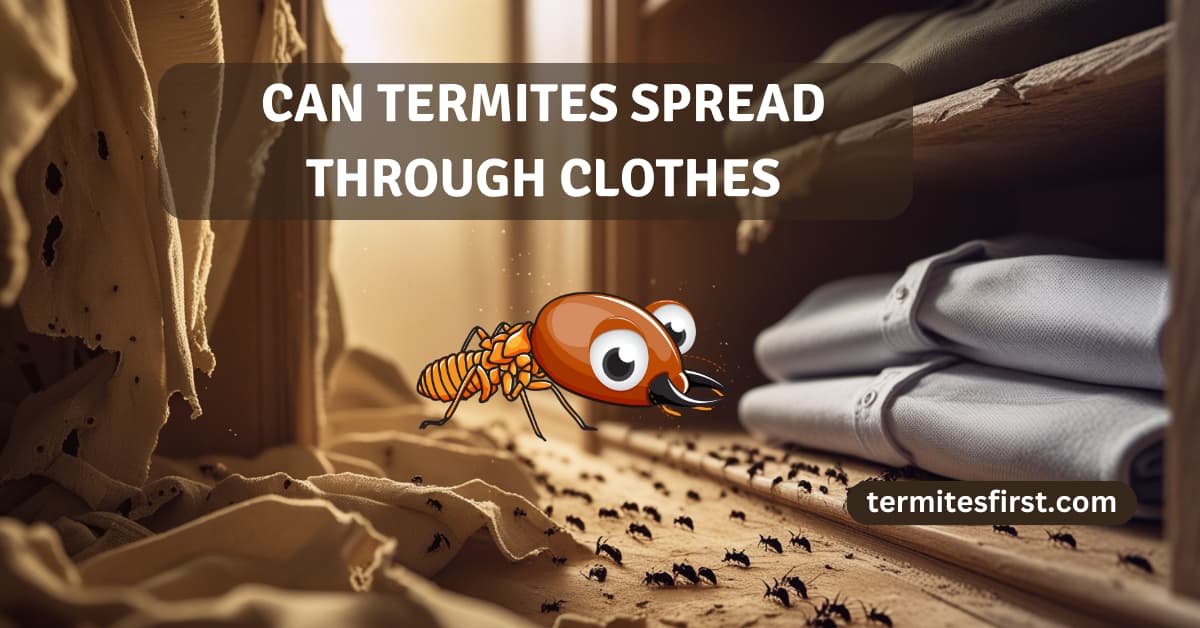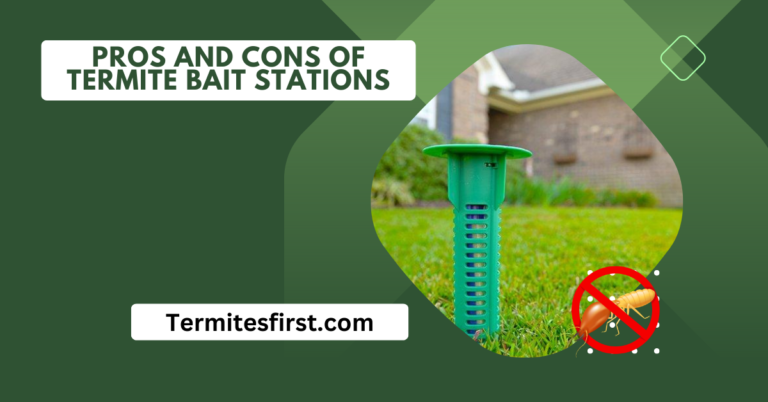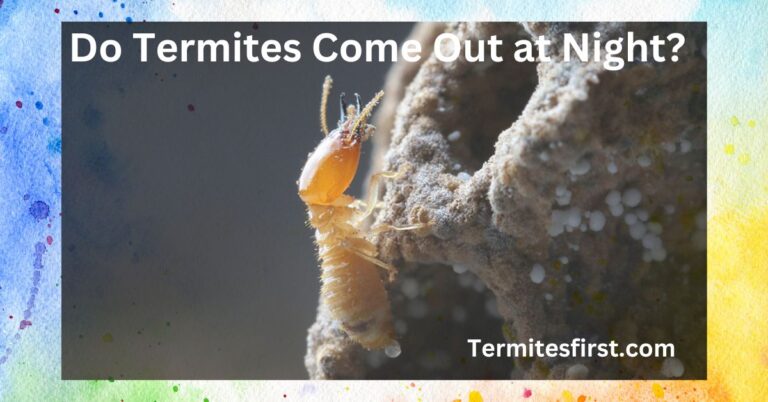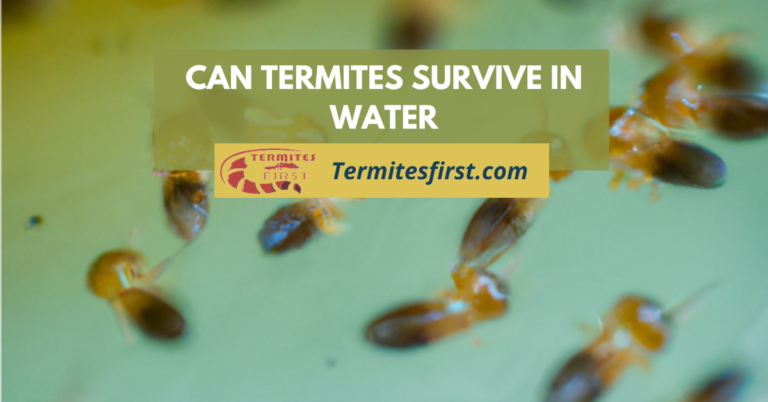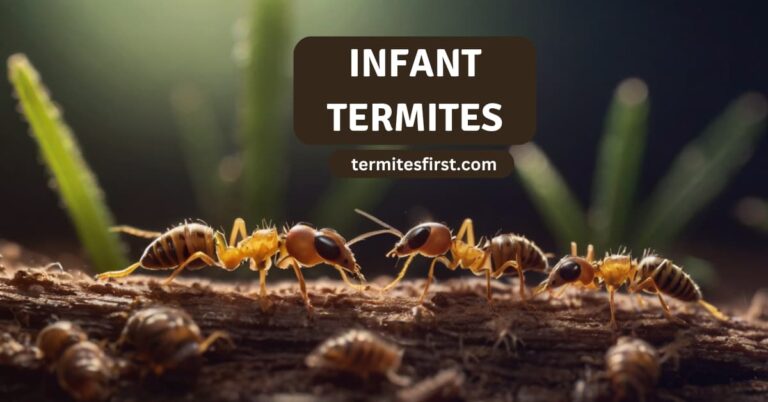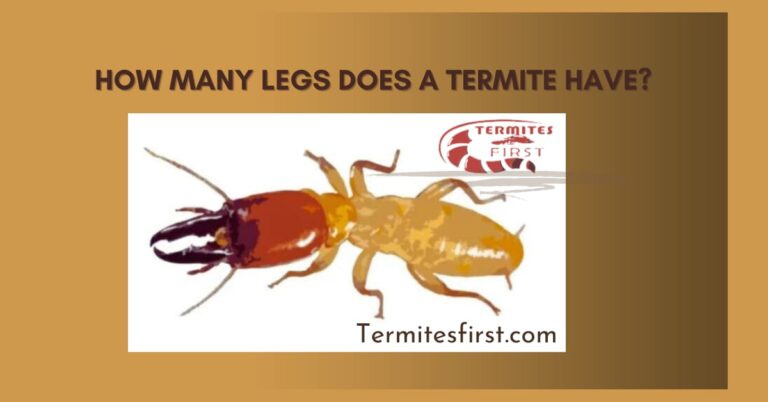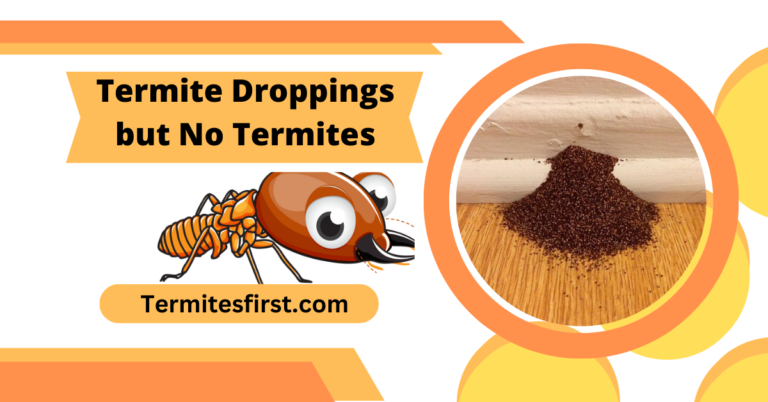Can Termites Spread Through My Clothes?
Being knowledgeable about how termites travel and act is an important part of avoiding a potentially costly infestation.
Termites mainly spread through wood and soil, preferring areas with abundant moisture. It would be rare for termites to spread through clothing, but it isn’t out of the question. They might be able to do so if clothes are in contact with infested surfaces.
Those odds are very slim compared to their other, more typical avenues. Learning all of this can help you plan for the most effective pest control measures so you can rest easy.
- Termites can do damage to any cellulose-rich materials including clothing, especially drywood termites, which can damage fabric such as cotton and wool.
- While obviously the risk of subterranean termites hitching a ride on clothing is very low, they can be accidentally spread by transporting infested wooden items.
- Consistent checking for indicators of termites such as swarmers and fecal pellets is important to preventing and recognizing infestations at an early stage.
- Personal items kept in attics or basements are at an increased risk of termite destruction. This is another reason why regular pest control is so important.
- Telling apart fabric pests, like termites and clothes moths, is important for determining the right management and prevention tactics.
- You can save your specialty fabrics from destructive termites by applying termite preventive solutions. To help protect your clothes from termites, store them in airtight containers and maintain low humidity levels.
Can Termites Infest Clothing?
By learning what termites are attracted to and their behaviors, you can get a better idea of whether or not they are a threat to your clothing. Termites, particularly the drywood type, are notoriously known for munching down on cellulose sources. This means that household items, including clothing and wooden frames, can turn into a potential food source for these pests.
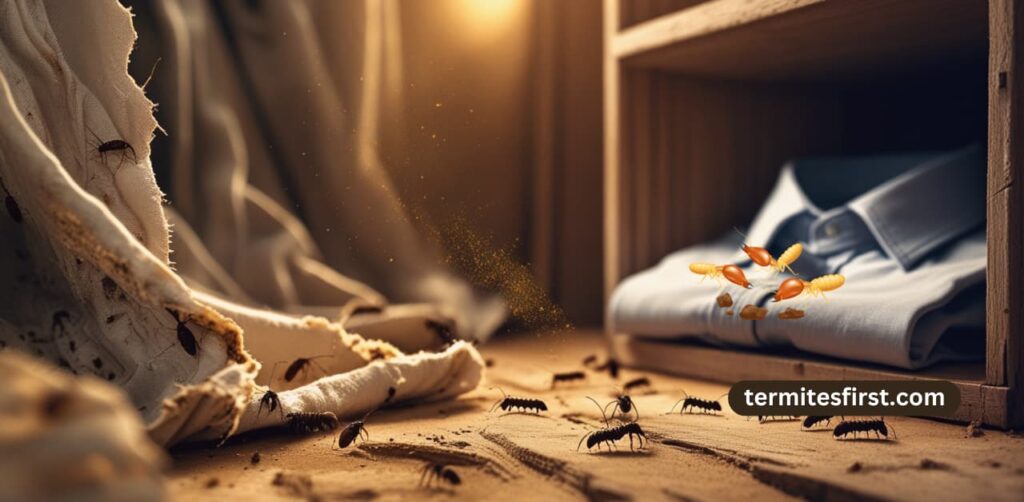
Identifying termite damage on clothing can be difficult. The symptoms may sometimes appear very similar to those caused by other fabric infesting pests, such as clothes moths or carpet beetles. That similarity can trick even the most watchful homeowners into overlooking a potential termite problem.
Subterranean termites, which usually live underground, are less likely to infest clothing. Their habitat preferences mean they’ll rarely come into contact with items in your basement. Drywood termites are another matter. They can rapidly infest wooden furniture and other belongings that can be moved from location to location, creating new infestations.
This remarkable adaptability makes them able to infest many common household items, including clothing, if the opportunity arises.
1. Do Termites Travel in Clothes?
Although direct transport of termites on clothing is unlikely, it can happen. Drywood termites, especially, can ride along on infested wooden goods such as furniture. This can occur in transit, when moving, or when buying second-hand clothing or items that haven’t been properly inspected.
The likelihood of subterranean termites hitching a ride on clothing is extremely low. If you don’t inspect your luggage and bags often, they might accidentally transport pests. This is particularly important for visitors traveling from areas with large termite colonies.
In urban areas around Texas, these pests have emerged as one of the biggest issues facing Texans.
2. How Termites Enter Homes
Typically, termites get into homes through wood in direct contact with the soil or through foundation cracks. Drywood termites swarm and enter through broken wood exterior surfaces, so regular home repair and upkeep is essential.
Mud tubes, a signature of subterranean termites, are another sign of their presence. Regular inspections will allow homeowners to find these entry points before they have a chance to develop an infestation.
3. Signs of Termite Infestation
Common signs of termite infestation include:
- Swarmers or discarded wings, which are the clearest signs of a termite infestation in or around your home.
- Small holes in wood, pointing to active termite feeding.
- Fecal pellets found around the house, signaling active colonies.
- Mud tubes, a sure sign of subterranean termites.
- Seasonal swarming may point to larger infestations.
Identifying these signs is important, since termites can be easily confused with ants due to their similar look. Drywood termites are perhaps the most infamous of the bunch, often entering homes at swarming times when they can find creviced wood to burrow within.
Formosan termites are a huge hazard, since they are quickly spread through transport on infested furniture.
Risks to Personal Belongings
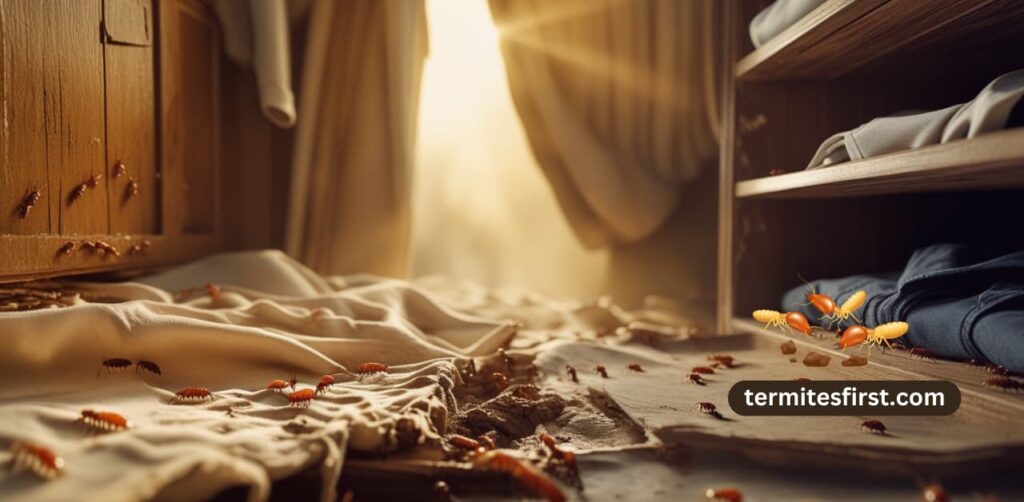
Threats to Clothing from Termites
Termites have an almost supernatural knack for ruining all kinds of personal property, and clothing isn’t immune to their damaging ways. Their fondness for cellulose-rich fabrics such as cotton and wool renders these belongings especially vulnerable. When termites make their way into a home, untreated clothes can become a casualty.
Their feeding habits cause damage that isn’t always visible right away, making early detection difficult. That sneaky harm can lead to serious monetary damage — replacing ruined clothing can become a major expense. Or your favorite wool sweater mysteriously gets holes in it. At the same time, your favorite cotton dress might begin to develop mysterious holes.
It’s important to identify these risks to personal belongings to prevent unpleasant surprises.
Impact on Other Fabric Items
The risk doesn’t stop there. Especially those items made from natural fibers, like bedding, rugs, and curtains, are fabric items. Not only are they capable of causing structural damage, termites leave behind unsightly stains which ruin the appearance of these items.
Termites can invite additional fabric pests into a home. This compounds the problem, making prevention even more essential. Check every fabric item in your home—even things in storage. This complete inspection will allow you to detect and repair any problems before they worsen.
A gorgeous wool rug will suddenly become a buffet line for termites and moths. This invasion can result in a far more extensive repair to your beloved possession.
Potential Damage to Luggage
Luggage is another way termites can enter homes. Wooden items, particularly luggage, often conceal termites that can take a trip along with you. Moist environments within baggage can only make the situation worse, forming a perfect environment for these pests.
If insufficient precautions are taken, travelers are likely to return home with unwelcome guests that can cause costly and sometimes irreversible damage to personal belongings. Wooden furniture, frequently used for luggage, can be a vector for Formosan termites, which are known to spread aggressively.
This is what makes it especially important to check baggage carefully before and after travel.
Additional Risks from Building Materials
Wooden planks and logs commonly used as building materials or decorations can unknowingly bring termites to new areas. Discarded wings are a sure sign they’re around, and when they are they can destroy your belongings.
In states such as Texas, the danger is heightened as both drywood and subterranean termites are widespread. Their telltale signs, such as small fecal pellets or their tunnels on the ground, make them dangerous opponents.
Routine pest control measures will go a long way in keeping your belongings safe. Since termites can live hidden in hard-to-reach areas such as attics and basements, prevention is key.
Common Fabric Pests
When discussing fabric pests, it’s always good to familiarize ourselves with the usual suspects that may take up residence in our closets. Among these, the most infamous are clothes moths, carpet beetles, and cockroaches. Each of these pests, including the adult roaches, specifically pulls fabric into their diets, doing damage that is both expensive and exasperating.
Clothes moths adore eating wool, silk, and other natural fibers. As they eat, they create ugly holes. Carpet beetles are just as voracious, consuming any natural fibers such as wool, feathers, and even leather. Cockroaches are most often associated with food contamination, and they like to chew on fabrics, which damages them, particularly if those fabrics are marked with food stains or residues.
Knowing what attracts these pests, including the common roaches, is key. Clothes moths prefer to lay eggs in dark, undisturbed areas, while carpet beetles are drawn to natural fibers. Cockroaches, while less picky, can be very harmful as they spread germs and bacteria, making them a significant pest problem indoors.
Understanding how to differentiate between these pests is critical to addressing an infestation efficiently. That’s why each pest requires a unique strategy for effective control and prevention, especially when dealing with a potential termite problem. This underscores just how important it is to know the precise pest you’re working with.
Recognize Fabric Threats
Knowing what signs of fabric pests to look out for can help you avoid a world of woe. Look for telltale signs such as webbing, larvae, and damage to the material itself. Quick identification can save you from causing widespread damage to your personal property.
Make a habit of regularly inspecting areas where fabric items are kept, looking for early signs of any pest activity. Cleaning is one of the most effective preventive measures for avoiding fabric pest infestations. By keeping your home as clean as possible, you can help make pests less likely to take up residence and do damage.
Differentiate Between Pests
Here’s a simple table to illustrate the differences:
| Pest | Characteristics | Damage Type |
| Termites | Wood-based diet, rarely target fabrics | Structural damage |
| Clothes Moths | Prefer dark, undisturbed spaces, eat fabrics | Holes in clothing, fabric damage |
| Carpet Beetles | Attracted to natural fibers, larvae cause harm | Fiber destruction, holes in textiles |
Understanding these distinctions helps you select the best management tactics. While we needn’t worry about termites munching our fabric, they can still do a number on our structures.
Clothes moths and carpet beetles are the more immediate threat to textiles, with each causing different kinds of damage. By being aware of these differences, you will be able to use appropriate pest control methods, such as traps, insecticides, or natural repellents.
Preventive Measures for Clothes
To prevent clothes from being damaged by termites, there are several effective measures homeowners can take. Keeping indoor humidity levels low is crucial, as high moisture attracts termite species. Utilizing a dehumidifier or improving air circulation can significantly reduce the risk of termite infestations.
- For long-term storage, use airtight containers to keep clothes safe from pests.
- Regularly clean closets and storage areas to eliminate dust and possible infestations.
- Look over things carefully before putting them into storage to identify any indication of pest development at the soonest point.
Additionally, sealing cracks and crevices in storage areas is essential for keeping these pests out. Natural repellents, such as cedarwood and lavender sachets, are effective in protecting clothes from bugs while avoiding harmful chemicals. These measures not only deter termites but also help maintain a pest-free environment in your home.
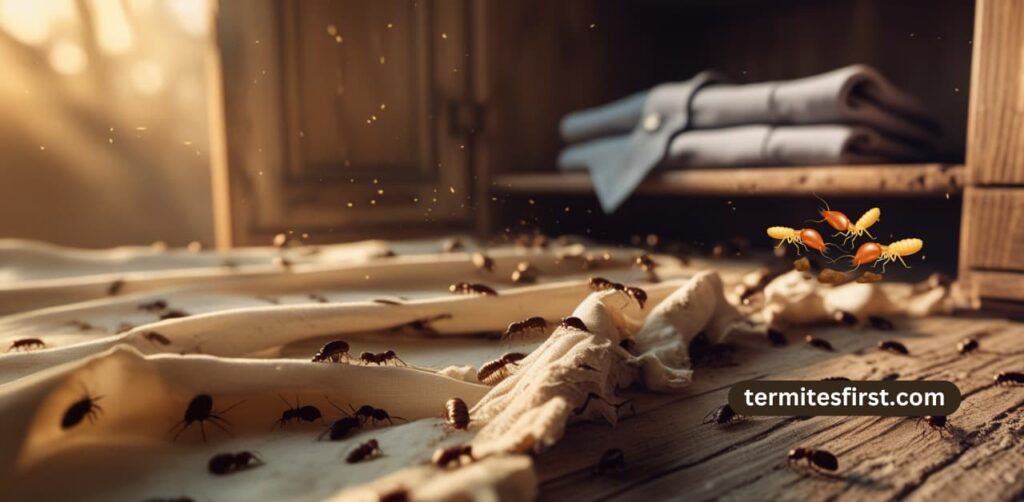
Regular inspections for termite activity can further ensure that your living spaces, including attics and crawl spaces, remain safe from potential infestations. By implementing these strategies, you can effectively safeguard your belongings from the threat of termites and other insects.
Protect Clothing from Termites
Smart storage solutions are your best line of defense against infestations. Airtight containers or vacuum-packed bags provide the best protection.
It’s equally important to regularly inspect any clothing you have in storage. Identifying early signs such as finding wings cast off, wood chewed up, or wings cast off fecal pellets can prevent a worse infestation down the road.
Don’t let clothing come into contact with wooden furniture and fixtures. This makes it more likely that termites will take up residence in these spaces.
Working with pest control companies such as Pestech can ensure you stay a termite-free environment. They’ll cover your routine pest control measures with 100% satisfaction guaranteed, giving you peace of mind.
Secure Luggage Against Infestation
Clothing and luggage are another common way that pests hitch a ride. Here are some tips to protect your belongings:
- Inspect any luggage or other items before you pack to make sure it’s pest free.
- Don’t set your luggage down next to wooden structures that could harbor termites.
- Use pest-proof bags when storing luggage.
Cleaning luggage after traveling can help reduce the chances of bringing home unwanted pests. Taking this simple preventive measure will save all those inconveniences in the future.
The key here is keeping luggage stored in dry, pest-free areas because moisture can invite unwanted guests. Inspect before and after travel for signs of infestation.
If you notice a problem, take care of it immediately to maintain a pest-free environment.
Maintain a Pest-Free Home Environment
To keep a pest-free home, consider these maintenance tips:
- Keep gutters clean to prevent moisture build-up.
- Maintain vegetation around the home to eliminate pest hiding spots.
- Seal foundation cracks to block entryways for termites.
Annual pest inspections can catch these pests before they ever become a problem. Moisture issues lead to mold dangers, so fixing these problems not only prevents pests, but creates a safe home.
A preventive approach to pest control protects your property. It helps prevent any unwanted infestations, so you can rest easy.
Conclusion
While termites don’t typically eat clothing, they can cause destruction to other personal effects. Clothing can be vulnerable to pests such as moths or carpet beetles. These critters are obsessed with natural fibers. Termite-proofing your clothes is easy. Consistent cleaning and keeping clothes in sealed containers can go a long way. To keep pests away naturally, use cedar blocks or lavender sachets. Taking these actions will help make sure clothes don’t get ruined by termites.
If you notice any signs of pests, call for help immediately. The sooner you act, the less damage you’ll face. Continue reading. Stay smart, stay safe, stay pest free. To learn more about how to protect your valuables, check out our comprehensive guides. We’ll help you keep your closet bug-free and your worries at bay.
Frequently Asked Questions
Termites, especially eastern subterranean termites, are primarily attracted to wood and paper. While they typically don’t eat clothes, garments stored near a termite hiding spot could still be at risk of destruction.
Termites, particularly wood termites, are attracted to any cellulose-rich material, such as wood. Although clothing is not an appealing option for them, if improperly stored alongside wood-based products, it may still be at risk.
Other fabric pests include clothes moths, silverfish, and adult carpet beetles. These pests love natural fibers, making it crucial to keep clothes stored and protected from bugs.
Keep clothing in sealed containers to prevent pest problems like clothes moths and fabric bugs. Periodically clean and check clothing for any indication of an infestation.
The bad news is that termites, such as eastern subterranean termites, can’t spread through clothes. They typically move through soil or wood, often found in crawl spaces or around wooden items.
Check for tiny holes, larvae, or silk strands, as these signs often indicate an infestation from clothes moths or adult carpet beetles, since termite activity typically doesn’t involve clothing.
Be sure to check your clothing frequently, particularly garments that are packed away for extended periods of time, as they can attract pests like clothes moths. Additionally, repair wood around the house and inspect crawl spaces every few months to catch and address any termite infestations early.

